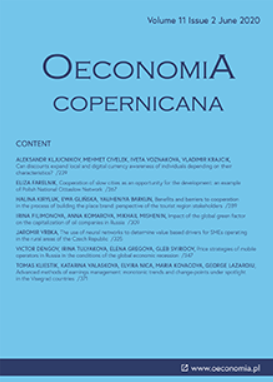Brand valuation: an innovative approach based on the risk difference
Brand valuation: an innovative approach based on the risk difference
Author(s): Roman Skalicky, Tomáš Meluzín, Marek ZineckerSubject(s): Business Economy / Management, Methodology and research technology, Accounting - Business Administration, Marketing / Advertising
Published by: Instytut Badań Gospodarczych
Keywords: brand valuation; valuation methods; risk difference; Net Present Value; NPV; IRR;
Summary/Abstract: Research background: Among academicians, a growing interest in brand valuation methods can be observed since the 1980s, when it became obvious that firms have off-balance-sheet assets which have a significant effect on their value. Moreover, in a number of cases, the need to value the brand arises due to the reporting requirements or transactional and other intrafirm reasons. The existing methods used so far have commonly focused on changes in variables such as sale prices, changes in customer behaviour, or sales volumes and very often lead to different results, even when valuing the same brand. We believe that the risk factor has been neglected in these methods, although having a significant impact on the brand valuation. Purpose of the article: The aim of this paper is to formulate an alternative brand valuation approach based on the risk difference. This is defined as the difference between the risk to which a producer with a certain brand is exposed and the risk of the producer without a brand. Methods: Firstly, a set of assumptions was defined concerning the issue what conditions are required to be applied to use the proposed methodological approach. Next, the concept itself is formulated and tested while using the case study approach. Hence, in conditions of a model company, the method was verified with specific data. The results were also compared with the reproduction cost approach. Findings & value added: This paper presents a novel brand valuation method based on the risk difference. Building on a thought experiment, we compare an incumbent with a brand rather than with an average producer, which is a commonly used approach, with a new entrant to the market. We argue that in comparison to existing methods, our methodological approach reduces the number of unobservable inputs in the brand valuation process, and thus increases the accuracy and reliability of its results. Our method supports both researchers and practitioners to establish a better understanding between the well-established financial theories and new directions in brand valuation research.
Journal: Oeconomia Copernicana
- Issue Year: 12/2021
- Issue No: 1
- Page Range: 159-191
- Page Count: 33
- Language: English

